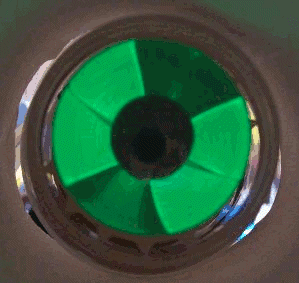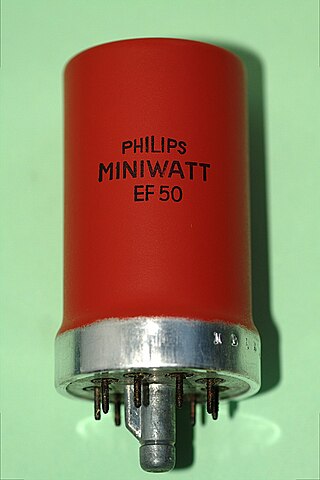
A.C. Cossor Ltd. was a British electronics company founded in 1859. The company's products included valves, radios, televisions and military electronics. The company was purchased by Raytheon in 1961.

A.C. Cossor Ltd. was a British electronics company founded in 1859. The company's products included valves, radios, televisions and military electronics. The company was purchased by Raytheon in 1961.
The story of A.C. Cossor Ltd. began in 1859 when the company was established by Alfred Charles Cossor in Clerkenwell, London to manufacture scientific glassware. His eldest son, also called Alfred Charles Cossor joined the company in 1875, and it was he who founded the A.C. Cossor electronics company. The company's expertise in the manufacture of electrical glassware, such as early cathode ray tubes and X-ray tubes, led the company to diversify into electronics. The younger son Frank Cossor joined the company in 1885, and eventually took over the running of the original scientific glassware company which remains to this day as Accoson, a manufacturer of sphygmomanometers.
Cossor, a go-ahead electronics firm, designed, and manufactured electronic thermionic valves, domestic radio sets and television receivers both before, and after World War II. During the War, their work on the Chain Home radar alongside Pye and EMI brought great prestige to the company. By the late 1950s, Cossor had sold its consumer electronics interests to the Philips electronics giant. Later, a merger with American Raytheon was to come, and today, Cossor is still part of the American group.

Cossor has designed IFF equipment for the British Aerospace Rapier missile, Shorts Blowpipe missile, Bofors RBS-70, Ericsson's Giraffe radar and the Contraves Italiana's LPD-20 air defence radar. Typical applications of the Cossor's IFF system include Redeye, Stinger, and SA-7 missiles and other short range air defence guns and missiles. [6]

A vacuum tube, electron tube, valve, or tube, is a device that controls electric current flow in a high vacuum between electrodes to which an electric potential difference has been applied.
A tetrode is a vacuum tube having four active electrodes. The four electrodes in order from the centre are: a thermionic cathode, first and second grids, and a plate. There are several varieties of tetrodes, the most common being the screen-grid tube and the beam tetrode. In screen-grid tubes and beam tetrodes, the first grid is the control grid and the second grid is the screen grid. In other tetrodes one of the grids is a control grid, while the other may have a variety of functions.

Allen Balcom DuMont, also spelled Du Mont, was an American electronics engineer, scientist and inventor who improved the cathode ray tube in 1931 for use in television receivers. Seven years later he manufactured and sold the first commercially practical television set to the public. In June 1938, his Model 180 television receiver was the first all-electronic television set sold to the public, a few months prior to RCA's first TV set in April 1939. In 1946, DuMont founded the first television network to be licensed, the DuMont Television Network, by linking station WABD in New York City to station W3XWT, which later became WTTG, in Washington, D.C. WTTG was named for Dr. Thomas T. Goldsmith, DuMont's Vice President of Research, and his best friend. DuMont's successes in television picture tubes, TV sets and components and his involvement in commercial TV broadcasting made him the first millionaire in the business.

The Raytheon Company was a major U.S. defense contractor and industrial corporation with manufacturing concentrations in weapons and military and commercial electronics. It was previously involved in corporate and special-mission aircraft until early 2007. Raytheon was the world's largest producer of guided missiles. In April 2020, the company merged with United Technologies Corporation to form Raytheon Technologies, which, since July 2023, is known as RTX Corporation.

A valve amplifier or tube amplifier is a type of electronic amplifier that uses vacuum tubes to increase the amplitude or power of a signal. Low to medium power valve amplifiers for frequencies below the microwaves were largely replaced by solid state amplifiers in the 1960s and 1970s. Valve amplifiers can be used for applications such as guitar amplifiers, satellite transponders such as DirecTV and GPS, high quality stereo amplifiers, military applications and very high power radio and UHF television transmitters.

A thyratron is a type of gas-filled tube used as a high-power electrical switch and controlled rectifier. Thyratrons can handle much greater currents than similar hard-vacuum tubes. Electron multiplication occurs when the gas becomes ionized, producing a phenomenon known as Townsend discharge. Gases used include mercury vapor, xenon, neon, and hydrogen. Unlike a vacuum tube (valve), a thyratron cannot be used to amplify signals linearly.

An active electronically scanned array (AESA) is a type of phased array antenna, which is a computer-controlled antenna array in which the beam of radio waves can be electronically steered to point in different directions without moving the antenna. In the AESA, each antenna element is connected to a small solid-state transmit/receive module (TRM) under the control of a computer, which performs the functions of a transmitter and/or receiver for the antenna. This contrasts with a passive electronically scanned array (PESA), in which all the antenna elements are connected to a single transmitter and/or receiver through phase shifters under the control of the computer. AESA's main use is in radar, and these are known as active phased array radar (APAR).

Ferranti or Ferranti International PLC was a UK electrical engineering and equipment firm that operated for over a century from 1885 until it went bankrupt in 1993. The company was once a constituent of the FTSE 100 Index.

The AN/MPQ-64 Sentinel is an X-band electronically steered pulse-Doppler 3D radar system used to alert and cue Short Range Air Defense (SHORAD) weapons to the locations of hostile targets approaching their front line forces. It is currently produced by Raytheon Missiles & Defense.

Pye Ltd was an electronics company founded in 1896 in Cambridge, England, as a manufacturer of scientific instruments. The company merged with EKCO in 1960. Philips of the Netherlands acquired a majority shareholding in 1967, and later gained full ownership.

AWA Technology Services, name based on former name Amalgamated Wireless (Australasia) Ltd, is an Australian provider for technology related services. Throughout most of the 20th century AWA was Australia's largest and most prominent electronics organisation, undertaking development, manufacture and distribution of radio, telecommunications, television and audio equipment as well as broadcasting services.
Bharat Electronics Limited (BEL) is an Indian Government-owned aerospace and defence electronics company. It primarily manufactures advanced electronic products for ground and aerospace applications. BEL is one of sixteen PSUs under the Ministry of Defence of India. It has been granted Navratna status by the Government of India.

The Fleming valve, also called the Fleming oscillation valve, was a thermionic valve or vacuum tube invented in 1904 by English physicist John Ambrose Fleming as a detector for early radio receivers used in electromagnetic wireless telegraphy. It was the first practical vacuum tube and the first thermionic diode, a vacuum tube whose purpose is to conduct current in one direction and block current flowing in the opposite direction. The thermionic diode was later widely used as a rectifier — a device that converts alternating current (AC) into direct current (DC) — in the power supplies of a wide range of electronic devices, until beginning to be replaced by the selenium rectifier in the early 1930s and almost completely replaced by the semiconductor diode in the 1960s. The Fleming valve was the forerunner of all vacuum tubes, which dominated electronics for 50 years. The IEEE has described it as "one of the most important developments in the history of electronics", and it is on the List of IEEE Milestones for electrical engineering.

A magic eye tube or tuning indicator, in technical literature called an electron-ray indicator tube, is a vacuum tube which gives a visual indication of the amplitude of an electronic signal, such as an audio output, radio-frequency signal strength, or other functions. The magic eye is a specific type of such a tube with a circular display similar to the EM34 illustrated. Its first broad application was as a tuning indicator in radio receivers, to give an indication of the relative strength of the received radio signal, to show when a radio station was properly tuned in.

Thomas Toliver Goldsmith Jr. was an American television pioneer, the co-inventor of the cathode-ray tube amusement device, and a professor of physics at Furman University.
M-OV was a British manufacturer of thermionic valves. It was a subsidiary of the (British) General Electric Company Ltd. It was named after the Marconi Company and Osram, which were two major manufacturers of the tube.

In the field of electronics, the EF50 is an early all-glass wideband remote cutoff pentode designed in 1938 by Philips. It was a landmark in the development of vacuum tube technology, departing from construction ideas of the time, that was essentially unchanged from light bulb designs. Initially used in television receivers, it quickly gained a vital role in British radar, and great efforts were made to secure a continuing supply of the device as Holland fell in World War II.

Radar, Gun Laying, Mark III, or GL Mk. III for short, was a radar system used by the British Army to directly guide, or lay, anti-aircraft artillery (AA). The GL Mk. III was not a single radar, but a family of related designs that saw constant improvement during and after World War II. These were renamed shortly after their introduction in late 1942, becoming the Radar, AA, No. 3, and often paired with an early warning radar, the AA No. 4, which was also produced in several models.

RTX Corporation, formerly Raytheon Technologies Corporation, is an American multinational aerospace and defense conglomerate headquartered in Arlington, Virginia. It is one of the largest aerospace and defense manufacturers in the world by revenue and market capitalization, as well as one of the largest providers of intelligence services. RTX manufactures aircraft engines, avionics, aerostructures, cybersecurity solutions, guided missiles, air defense systems, satellites, and drones. The company is also a large military contractor, getting a significant portion of its revenue from the U.S. government.